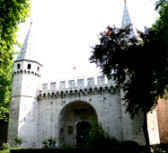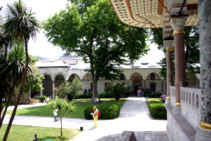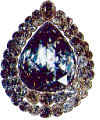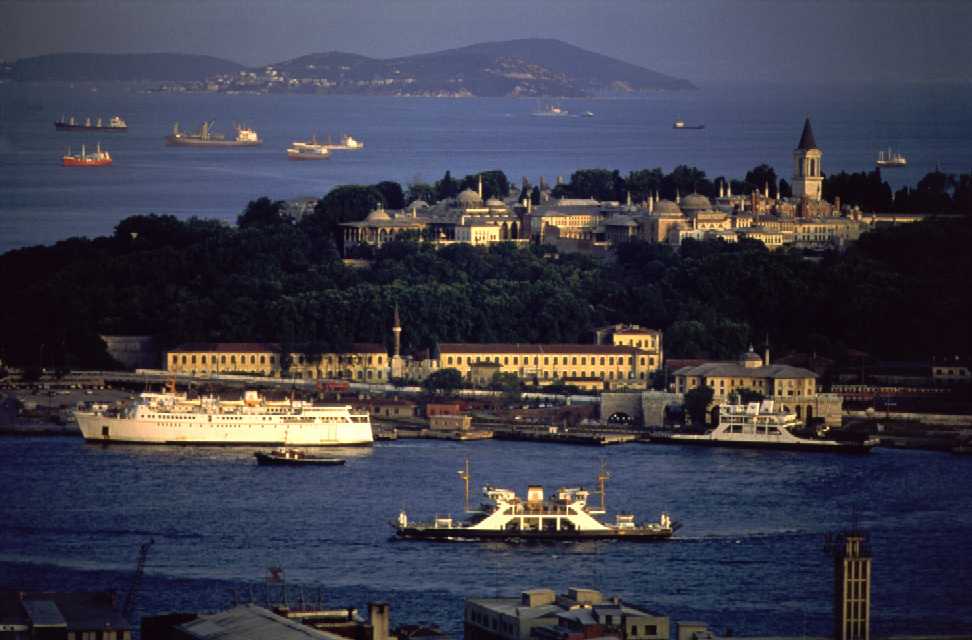
Latest News
New openings
The Zeyrek Cistern is opened to visits after years of restorations.
Entrance fees
As of 2026, Palace museums' entrance fees are raised.
Museum Pass
You can buy the "Museum Pass" for foreigners which is valid for 5 days in various museums of Istanbul.
Museums open 7 days
Many State museums in Istanbul operate 7 days a week, except Topkapi Palace.
Topkapi Palace
The Topkapi Palace is the biggest and one of the most popular sites to visit in Istanbul. It was built in between 1466 and 1478 by the sultan Mehmet II on top of a hill in a small peninsula, dominating the Golden Horn to the north, the Sea of Marmara to the south, and the Bosphorus strait to the north east, with great views of the Asian side as well. The palace was the political center of the Ottoman Empire between the 15th and 19th centuries, until they built Dolmabahce Palace by the waterside.After the Conquest of Constantinople in 1453, Mehmet II ordered to built his palace in its present location on top of the ancient Byzantine ruins, meanwhile he spent some time during its construction at a smaller palace where there is the University of Istanbul today, in Bayezit square. Once they moved to Topkapi palace, the old one was called as "Old Palace" and Topkapi as the "New Palace". But local people called it as "Topkapi" which in Turkish means "Gate of Cannons" because of huge cannons displayed outside of its gates, those which were used during the Conquest.
There were originally around 700-800 residents of the Palace at the beginning, but during the centuries it dramatically raised to 5,000 during normal days and 10,000 during festivals, approximately. Amongst these, the Janissaries were the biggest part of the population who were based within the first courtyard of the palace. The palace became the largest palace in the world, a city within a city. The walls surrounding it were about 5 kilometers (around 3 miles) long. The palace having around 700,000 m2 of area during the foundation years, it currently has only 80,000 m2 of area because of building constructions in its grounds towards the end.
During the 400 hundred years of reign at Topkapi, each sultan added a different section or hall to the palace, depending on his taste or on the needs of the time. Therefore the palace is formed by a maze of buildings centered around a series of courtyards protected by different gates. Its architecture is predominantly Middle Eastern in character. The initial construction was Cinili Mansion, a tiled kiosk finished in 1472, and the main gate (Bab-i Humayun in Arabic or the Imperial Gate) facing Sultanahmet square and Hagia Sophia church, and the Palace ramparts at the second gate (Bab-us Selam or the Gate of Salutation) were completed in 1478. A third gate, Bab-us Saade or the Felicity Gate, separates the core and most important parts of the palace from other sections, such as the Treasury for example.
At first, the Harem was left in the Old Palace and was moved to its present location only one century later by sultan Murad III, again with the addition of several buildings during many years. The Harem, literally meaning "forbidden" in Arabic, was a complex of apartments in the palace belonging to the wives, concubines and children of the sultan, guarded by the black eunuchs. At some point, its population topped to a record high of 474 ladies. Inside the Harem there were rooms dedicated to the mother of the sultan, wives of the sultan, his concubines, Turkish baths, circumcision room, apartments of the chief black eunuch, and apartments of the sultan, in total over 400 rooms. Today, the Harem is a separate museum within the palace complex and there are escorted tours at certain hours of the day.
The palace was opened to the public as a museum in 1924 by the order of Ataturk. There are many sections in the Topkapi Palace which can be visited today, these are exhibition halls and doesn't contain any furniture, except in few pavilions. Some of the exhibition halls might be closed for restorations but still the visit of the palace would take a half day for an interested person. Please note that in some of the exhibition halls you're not permitted to take any photographs.
Once you pass the first gate, Imperial Gate, you'll be in the first courtyard called as the "Courtyard of the Regiments". From this gate anybody could pass but only the sultan would be on the horse, while all others on foot. Here, a nice park, some ruins and columns from the Byzantine period, a 6th century Hagia Irene church which is occasionally used for some concerts and art exhibitions today, the Imperial Mint, and the Archaeological museum welcomes you. Before you get to the second gate, there are ticket boots, a change office, and a small gift shop on the right.
 The second gate has two guard towers and is called "Gate of Salutation", because everybody had to salute the sultan before going through. From this gate, only the sultan and people working in the palace could pass, it wasn't for the public access. Today, passing through this gate there will be a security check and ticket control, and you access to the second courtyard of the palace (courtyard of the Divan). There are two small scale models of the palace on the right and a big map showing the foundation and expansion of the Ottoman Empire. To the right of the courtyard, there are palace kitchens where there were between 800-1,000 cooks preparing food for this 10,000 people living in the palace. Today there is a nice collection of Chinese and some Japanese porcelains collection and the silverware at separate sections of the kitchens. Across the courtyard, to the left, there is the Divan, or Council Chamber, where the viziers and grand vizier gathered to talk about daily issues or to receive foreign visitors. There was the treasury of the Divan next door, which is an exhibition of weapons of that time today, and the Tower of the Justice above it was used for the surveillance of the harbor. The Harem entry is also in this courtyard just behind the Divan chamber.
The second gate has two guard towers and is called "Gate of Salutation", because everybody had to salute the sultan before going through. From this gate, only the sultan and people working in the palace could pass, it wasn't for the public access. Today, passing through this gate there will be a security check and ticket control, and you access to the second courtyard of the palace (courtyard of the Divan). There are two small scale models of the palace on the right and a big map showing the foundation and expansion of the Ottoman Empire. To the right of the courtyard, there are palace kitchens where there were between 800-1,000 cooks preparing food for this 10,000 people living in the palace. Today there is a nice collection of Chinese and some Japanese porcelains collection and the silverware at separate sections of the kitchens. Across the courtyard, to the left, there is the Divan, or Council Chamber, where the viziers and grand vizier gathered to talk about daily issues or to receive foreign visitors. There was the treasury of the Divan next door, which is an exhibition of weapons of that time today, and the Tower of the Justice above it was used for the surveillance of the harbor. The Harem entry is also in this courtyard just behind the Divan chamber.
 The third gate is called "Gate of Felicity" because the sultan and his court celebrated important events here, sitting on his throne; when the sultan was happy everybody was happy. This gate was protected by the white eunuchs and nobody could pass through without the permission of the sultan. When you enter the third courtyard (courtyard of the Enderun), the first building is the Audience Hall where the sultan received his viziers or foreign ambassadors. The room is nicely decorated with some furniture. Behind this room, there is a library as well. On the right of the courtyard there is a collection of sultans' costumes and the Treasury, maybe one of the most popular section of the museum. Amongst the many interesting items we can name the 86 carat Spoon Maker’s (Kasikci in Turkish) Diamond, Topkapi Dagger, huge emeralds, several thrones, big candle sticks made of pure gold, and relics of St. John the Baptist.
The third gate is called "Gate of Felicity" because the sultan and his court celebrated important events here, sitting on his throne; when the sultan was happy everybody was happy. This gate was protected by the white eunuchs and nobody could pass through without the permission of the sultan. When you enter the third courtyard (courtyard of the Enderun), the first building is the Audience Hall where the sultan received his viziers or foreign ambassadors. The room is nicely decorated with some furniture. Behind this room, there is a library as well. On the right of the courtyard there is a collection of sultans' costumes and the Treasury, maybe one of the most popular section of the museum. Amongst the many interesting items we can name the 86 carat Spoon Maker’s (Kasikci in Turkish) Diamond, Topkapi Dagger, huge emeralds, several thrones, big candle sticks made of pure gold, and relics of St. John the Baptist.
On the left of the third courtyard, there is the Holly Relics section where religiously important items are displayed, such as the mantle, footprint, a tooth and hair of the Prophet Mohammed, swords of the first caliphs, container of the Black Stone from Ka'ba, and so on. Next to this hall, there are several other rooms with the paintings of the sultans, miniatures, old clocks etc.
After the third courtyard, there are several passages to the fourth and last courtyard of the palace, the private garden of the sultan (Sofa-i Humayun in Arabic) where he had roses and tulips and some kiosks from which he had a great view of the city while drinking his tea or coffee. Baghdad kiosk, Revan kiosk and Sofa kiosk on the left of the courtyard overlooking the Golden Horn, all of them built in the 17th century and decorated with fine tiles and mother of pearl inlaid on wood, circumcision room for the sons of the sultan, Mecidiye kiosk on the right of the courtyard overlooking the Sea of Marmara and the Bosphorus, built in the mid-19th century, and the small mosque are some interesting elements of this last courtyard.
 The Topkapi Palace is in the Sultanahmet neighborhood near Eminonu in the Old City area, and is open daily between 09:00 – 17:00 except on Tuesdays. During the summer period it has longer opening hours (until 19:00 usually). The museum is closed to visitors also on the first day of religious holidays, as well as on 1st of January. Currently (2026), the admission to the palace costs 2,750 TL for adults, as a combined ticket including the Harem too.
The Topkapi Palace is in the Sultanahmet neighborhood near Eminonu in the Old City area, and is open daily between 09:00 – 17:00 except on Tuesdays. During the summer period it has longer opening hours (until 19:00 usually). The museum is closed to visitors also on the first day of religious holidays, as well as on 1st of January. Currently (2026), the admission to the palace costs 2,750 TL for adults, as a combined ticket including the Harem too.
Phone: +90 212 5120480
Fax: +90 212 5285991
Please note that admission fees, opening times or days of closure of the museums might be changed without prior notice, or that museum or section might be closed for restorations. To be certain on the closure days or opening times, you can call that museum directly (country code for Turkey is +90) or contact me to double check. Most of the museums have longer opening hours during summer months.
Click here for high resolution photo gallery of the Topkapi Palace. You can also check the Google Map of the Palace at this link.
Hope to see you soon in Istanbul.


